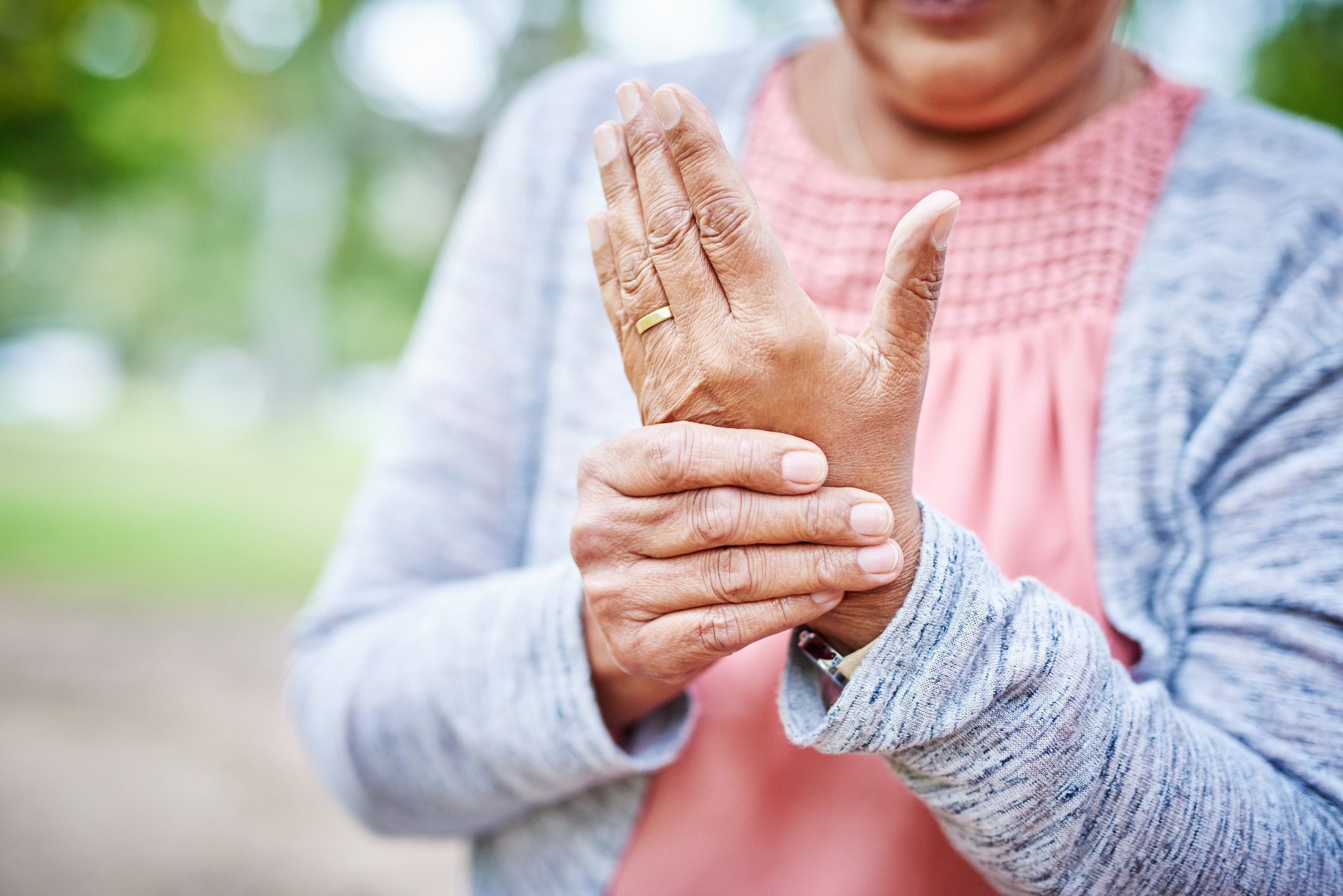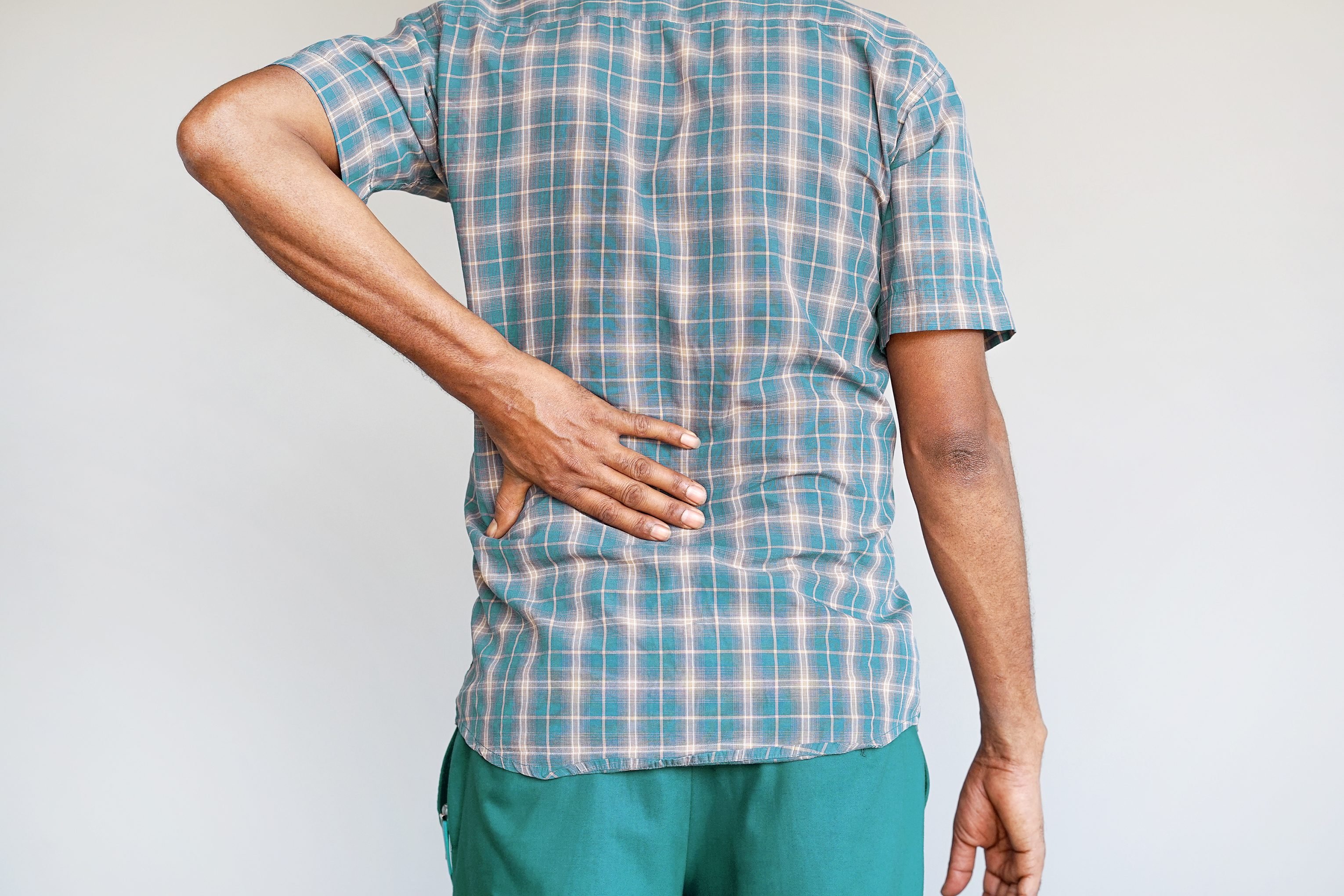The Difference Between Rheumatoid Arthritis and Osteoarthritis
Updated: Jun. 29, 2022
Both rheumatoid arthritis and osteoarthritis cause joint pain and stiffness, but their causes, treatments, and age of diagnosis are different.
Most people know the basics of arthritis: It’s a condition that affects your joints and leaves you with unwelcome aches and pains. It’s a common condition—23 percent of all adults in the U.S. have arthritis, according to the Centers for Disease Control and Prevention (CDC).
The thing is, while there are lots of similarities between the 100+ musculoskeletal conditions that fall under the arthritis umbrella, each type comes with its own set of symptoms, challenges, and treatment options. If you want to reduce symptoms and stop arthritis from interfering with your life, it’s critical to know which type you have.
Two types of arthritis that are often confused are rheumatoid arthritis and osteoarthritis. Yes, they both cause joint pain, stiffness, and movement restrictions, but their causes and treatments are very different. Doctors can tell which one you have by taking a thorough patient history, assessing your symptoms, and looking at scans like X-rays and MRIs. As a patient, it can be a little trickier to know what’s going on.
Here, experts explain the key differences between rheumatoid arthritis and osteoarthritis, including risk factors, symptoms, triggers, and treatment options.

Arthritis causes and risk factors
Rheumatoid arthritis (RA) is a type of inflammatory arthritis and autoimmune disease. “It’s basically a malfunction of the immune system,” explains Dee Dee Wu, MD, rheumatologist at the Hospital for Special Surgery in New York City. “Instead of protecting you as it should, it’s misdirected and starts to attack the joints.” This causes swelling and inflammation in the synovium, a soft connective tissue that lines the inside of the joints. Experts still don’t know exactly what makes some people develop RA (or any other autoimmune condition), but it’s believed to be a mix of genetic predisposition and environmental triggers like certain viral infections and cigarette smoking, says Dr. Wu. Women are three times more likely than men to develop RA, according to the Rheumatoid Arthritis Support Network.
Osteoarthritis (OA), on the other hand, is considered mechanical arthritis. It’s caused by wear and tear on the joints and a number of other biological processes that contribute to joint aging and damage, says Beth L. Jonas, MD, division chief of rheumatology, allergy, and immunology at UNC Health in Chapel Hill, North Carolina. In particular, osteoarthritis usually involves damage to the cartilage, but all types of tissues in the joint—bones, synovial structures, ligaments—can play a role. The causes also aren’t always very cut and dried, but there are a few things that we know are associated with the onset of the disease. One of them is genetics. “OA does tend to run in families,” Dr. Jonas says. Past joint injury and unnecessary surgery can also lead to osteoarthritis. And finally, osteoarthritis in weight-bearing joints like the knees and hips is often associated with obesity, Dr. Jonas adds.
Osteoarthritis is much more common than RA. About 30 million people in the U.S. have osteoarthritis, compared with 1.3 million people who have RA, according to the Arthritis Foundation.
Types of arthritis pain
RA is an inflammatory condition, so it tends to cause a lot of swelling, stiffness, and loss of range of motion of the affected joints, says Dr. Jonas. People often have a lot of stiffness first thing in the morning that lasts for longer than an hour after getting out of bed. People with RA also may feel very fatigued, which is a common symptom of autoimmune conditions.
In osteoarthritis, the breakdown of cartilage and other supporting structures in the joint tends to start gradually and gets progressively more painful over time. It causes pain or aching in the affected joint, especially during activity or after extended periods of activity. The joint may also make a clicking or cracking sound. Similarly to RA, it can cause swelling and loss of range of motion. It also often causes stiffness, but the difference is that it typically resolves soon after you start using the joint and RA stiffness lingers for much longer. Many people with osteoarthritis also develop osteophytes (bone spurs) in areas where cartilage is worn down and bone rubs against bone, triggering extra bone regrowth. These growths can put pressure on soft tissues and nerves and reduce normal range of motion.
Because RA is a systemic autoimmune condition it can affect other parts of the body other than the joints, including the skin, eyes, and lungs. Osteoarthritis symptoms, on the other hand, are largely confined to areas of the body in and around the joints.
Pain triggers in RA vs. osteoarthritis
The major difference between osteoarthritis and RA, is that with inflammatory arthritis like RA, symptoms are worse when you’ve been at rest. “You tend to feel more stiff and achy when you first get up in the morning, or if you’ve been inactive all day long. The joint will feel better with movement,” says Dr. Wu.
With osteoarthritis, stiffness can be common after periods of inactivity, but the biggest trigger tends to be too much activity. “The more you use the joint, the more it hurts,” says Dr. Wu. Pain usually gets worse as the day goes on or as you are more physically active.
Joints involved in RA vs. osteoarthritis
The joints involved can overlap between the two conditions, but they’re often pretty distinct, Dr. Wu says. RA most commonly affects joints in the hands, feet, wrists, elbows, knees, and ankles. It’s also considered a symmetric form of arthritis, meaning if it affects one hand or one foot, it’ll generally affect both, Dr. Jonas says. It doesn’t always happen that way, but it’s pretty common.
“OA is more commonly seen in large weight-bearing joints, like the hips, knees, and lower back. Areas that take on a lot of stress,” says Dr. Wu. Osteoarthritis can also impact the hands, but the specific joints often differ, and can help clue your doctor in to which type of arthritis it is. Osteoarthritis also doesn’t typically happen symmetrically, but rather starts in one isolated joint.

Age of diagnosis in RA vs. osteoarthritis
RA is a disease that can show up anytime from the teenage years, to the 30s and 40s, to as late as the 80s, says Dr. Jonas. The most common age of onset is between 30 and 60 years old, though women tend to develop RA at a younger age than men, according to the Rheumatoid Arthritis Support Network.
“OA tends to be a disease that increases with age,” Dr. Jonas says. “Most people will develop it in their 50s, 60s, or later, and the prevalence increases over time. The older you are, the more risk you have.” It’s unlikely to be diagnosed with osteoarthritis when you’re a young adult, unless it’s the result of a joint trauma that caused significant damage. This form of osteoarthritis is called post-traumatic arthritis and accounts for about 12 percent of osteoarthritis cases.
The rate of disease progression in RA vs. osteoarthritis
The rate at which RA and osteoarthritis progress will depend on each person’s individual case, Dr. Wu says. There’s no way to say if RA or osteoarthritis will get worse more quickly, because it really depends on how mild or severe the arthritis is to begin with, and ultimately, how well you manage it.
If RA is left untreated for too long, it can cause permanent joint damage beyond the inflammation that ends up looking more similar to the wear and tear of osteoarthritis. “We call that secondary OA, but I like to call it end-stage RA,” Dr. Jonas says. What happens is the inflammation causes cells to, over time, essentially eat away at the cartilage and bone and other supporting structures in the joint. With both RA and osteoarthritis, early intervention is important for slowing progression of damage.
Treatments for RA and osteoarthritis
There are a lot of medications available for RA that help manage the disease and slow progression, says Dr. Jonas. The most common treatments are called disease-modifying anti-rheumatic drugs (DMARDs) and biologics. The earlier RA is diagnosed and intervention begins, the better the chance of avoiding permanent joint damage. Many people who take DMARDS for RA can get the condition under control and essentially be in remission for long periods of time, although the medications can have side effects including a greater risk of infections (because they typically suppress the immune system). Patients with RA should not be treated with glucocorticoids like prednisone alone. If the condition is severe enough to warrant an immunosuppressant, a DMARD should be used.
(Here’s what you should know about using CBD for rheumatoid arthritis.)
Osteoarthritis, on the other hand, doesn’t have the same sort of therapies. “If it’s mild and manageable with physical therapy and NSAIDs, we typically do that first,” says Dr. Wu. Steroid injections or viscosupplementation (a procedure in which a gel-like fluid is injected into the knee to help lubricate and facilitate movement) may also help manage symptoms and prevent progression, though the latter has been shown to not be helpful for everyone.
Surgery is a last resort, says Dr. Wu. Joint replacements will fix the problem, but surgery comes with its own risks and recovery challenges, so doctors typically try other less invasive management options before resorting to surgery. Weight loss is also proven to be helpful if it’s a contributing factor for osteoarthritis, says Dr. Wu.
People with either RA or osteoarthritis can benefit from regular, safe physical activity. Working with a physical therapist can help you learn what exercises will help keep your joints moving to avoid stiffness without exacerbating your symptoms. The goal is ultimately to prevent further damage and maintain function, says Dr. Wu. You’ll want to work closely with your healthcare provider to make sure you’re doing exercises that are safe for you.













